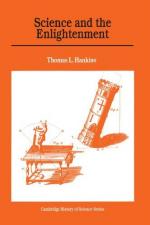
|
| Name: _________________________ | Period: ___________________ |
This quiz consists of 5 multiple choice and 5 short answer questions through Chapter 3, Experimental Physics.
Multiple Choice Questions
1. According to Chapter 1, who made Newton into a supreme rationalist whose laws of motion were a priori deductions of pure thought?
(a) Marquis de l'Hopital.
(b) Maupertuis.
(c) Roberts.
(d) Fontenelle.
2. In Chapter 3, who proposed a single static electrical "atmosphere" that attracted and repelled by pressure rather than by the impact of an electrical wind?
(a) Desagulier.
(b) Newton.
(c) Musschenbroek.
(d) Franklin.
3. By what name did natural philosophers want to be known as, according to the narrator in Chapter 1?
(a) Men of Letters.
(b) Men of Honor.
(c) Professors.
(d) Masters.
4. ________, "curator of experiments" at the Royal Society, began research on the luminosity of phosphorus in 1705, under instruction from members of the society.
(a) Francis Hauksbee.
(b) William Gilbert.
(c) Abbe Nollet.
(d) John Cuthbertson.
5. In Chapter 2, what was the name of the path of a body that is dragged over a resisting horizontal surface by a cord of which one end moves along a straight line found?
(a) Tractrix.
(b) Brachistachrone.
(c) Cycloid.
(d) Isoperimeters.
Short Answer Questions
1. Who carried rational mechanics to the highest point of generality and abstraction that it was to reach during the Enlightenment?
2. According to the narrator in Chapter 1, who was one of the originators of the mechanical philosophy who believed there were no forces or powers in matter?
3. Symmer's socks suggested the presence of ________ electrical fluids, according to the narrator in Chapter 3.
4. What was the name of the curve traced by the end of a string as it is unwrapped from another curve found in Chapter 2?
5. In Chapter 1, who claimed that his "principle of least action" proved the existence of God?
|
This section contains 264 words (approx. 1 page at 300 words per page) |

|




